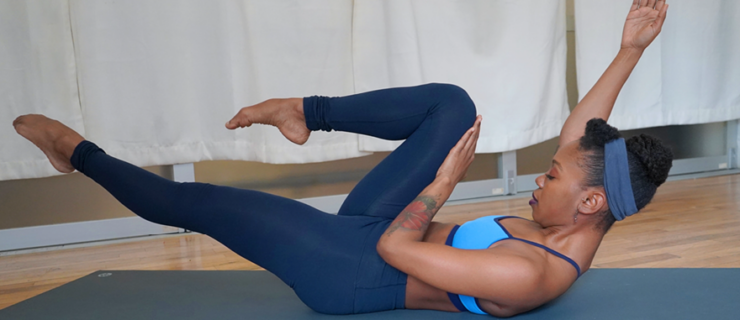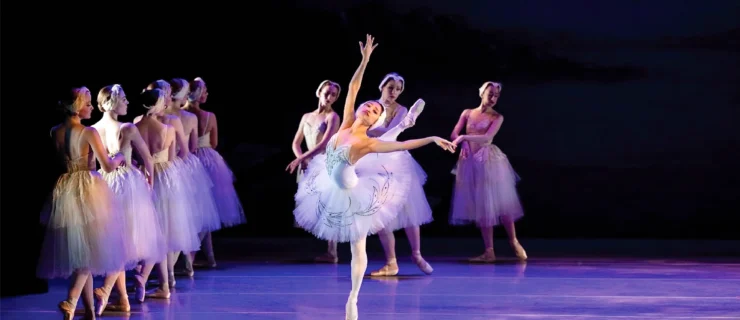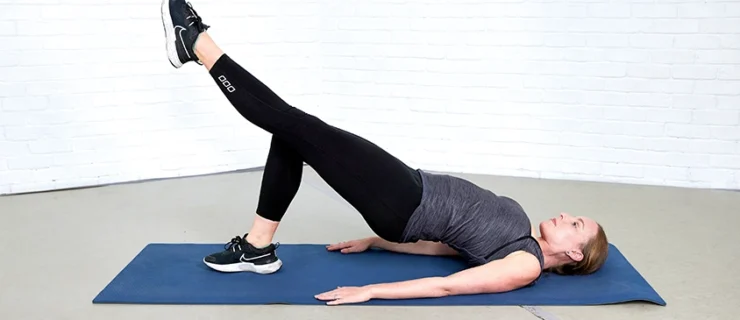Your Best Body: TRX Suspension Training
It’s no secret dancers have special fitness needs, so it may seem surprising that new research from Walnut Hill School for the Arts recommends a workout developed not by a ballerina, but a Navy SEAL. With the help of doctors from Boston Children’s Hospital, Walnut Hill’s director of dance Michael Owen and director of physical therapy Susan Kinney found TRX suspension training to be a secret ingredient in injury prevention in ballet dancers. The results come after 10-plus years of study, during which the school developed a wellness program consisting of Pilates, Gyrokinesis, hydroconditioning (resistance conditioning done in a pool) and TRX suspension training to reduce stress-related injuries, like fractures, in 14- to 18-year-old pre-professional dancers. Although the other forms of cross-training helped with injury prevention, TRX produced the most dramatic results.
The Workout
In a suspension training class, participants use straps anchored to a secure point, like rigging on the ceiling, to do simple exercises meant to strengthen, correct muscular imbalances and prevent injuries. A class might include single leg extensions with the working leg looped through a strap, vertical push-ups or lifting the hips into downward dog with feet in the straps. “Unlike other forms of weight training where the athlete might overdo the amount of weight and become injured, with suspension training, you work against your own body weight,” says Kinney. Plus, TRX is similar to ballet in that it gets you moving in all three planes—forward and back, up and down and side to side.
The Results
Walnut Hill’s research found increased strength in dancers who took just two 45-minute classes each week for five weeks. Pre-, mid- and post-program screenings measured the strength of key muscles used in ballet. Across the board, dancers gained strength in the lower abdominals, the gluteus medias (the primary pelvic stabilizing muscle used to properly align the hips when standing on one leg) and the flexor hallucis longus (the muscle that curls the big toe and plays a large role in demi-pointe work). That’s because the exercises often take dancers off balance, involve stabilizing the pelvis and core or require the feet to be firmly planted on the floor.
Try It
So how can you achieve similar results? Kinney says if you take a TRX class at a gym or YMCA, it won’t necessarily be tailored to dancers. She and Owen note that Walnut Hill’s curriculum took the movement and weight distribution of suspension training and adapted it to what is helpful, healthy and safe for dancers. But Owen expects to see more dancers eventually teaching TRX in gyms. Be sure to check into an instructor’s experience before choosing a class. “If they have some sort of dance background, I think that would be ideal,” says Owen. And be on the lookout for suspension training classes exclusively for dancers: The Boston Conservatory has already launched a version of Walnut Hill’s TRX program, and the research team hopes to expand the training to other dance schools.
Mental Olympics
With all the elements you’re supposed to think about during technique class—sequencing, counts, corrections, musicality—it’s only natural for your brain to feel exhausted. That’s where exercising your mind outside of the studio helps. Enter Fit Brains, the brain-training system that uses a series of games designed by neuroscientists to sharpen memory, concentration, visual-spatial coordination, problem solving and language skills. Not only do the games adapt to your specific strengths and weaknesses, but since they’re hosted online, you can use them virtually anywhere. Create an account at fitbrains.com to play a selection of their free games, and start training your way to a more perfect petit allégro.
Eat Fruit First
The Situation: You’re heading to a post-performance potluck full of scrumptious foods but still want to make healthy choices.
The Solution: Go for the fruit salad first. A recent study by Cornell University researchers found you’re less likely to overindulge at a buffet if you serve yourself fruit before heavier options like potatoes or cheesy casseroles. Why? When faced with a spread of food, people tend to fill their plates with the first dish in the line, leaving less plate space for other options.
Get Moving
With summer right around the corner, you may be dreaming of trading the ballet barre for the beach. And though taking some downtime is healthy, a recent study by scientists at Wayne State University suggests that long-term inactivity has an impact not only on the body, but also the brain. When you’re sedentary for a 12-week period, the structure and function of the brain can actually change, making the nervous system overstimulated and less able to react correctly. Though the study showed these changes in lab rats, researchers believe the same applies to humans. So be sure to work a game of Frisbee into your lazy beach days.
Cool Off
After an intense master class, you know your muscles are bound to be sore. But recent research suggests relief may be as close as your bathtub. A study published in Medicine & Science in Sports & Exercise found that soaking in a tub of 46-degree Fahrenheit water for 10 minutes speeds up muscle recovery, leaving you less sore after a vigorous workout. The cool water is thought to fight inflammation by bringing down the temperature of deep muscle tissue without constricting too much blood flow. If 46 degrees sounds too chilly, water ranging from 47 to 71 degrees will still give you some of the same effects.





